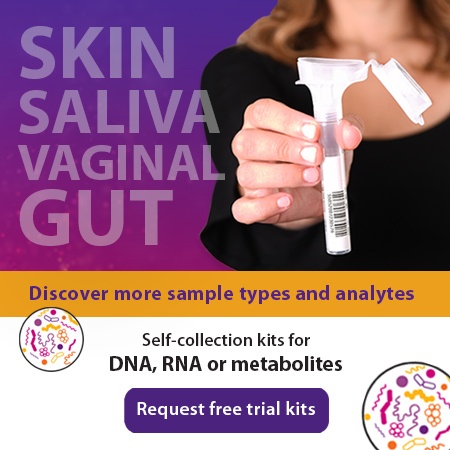2015-07-28
We reached out to Diana Taft at Cincinnati’s Children’s Hospital Medical Center to talk with her about her research in the microbiome field.
About the project
Tell me about your current research and how you became interested in the microbiome field.
I was first interested in the microbiome as a graduate student. My mentor had a data set on preterm infants and as part of that she had stool samples. She was in the process of sequencing the stool samples to look at the preterm infant gut microbiome and necrotizing enterocolitis. I was able to take that data set and use it for my thesis where I was looking at the preterm infant microbiome and sepsis. I just really love data on the intestinal microbiome. I think it’s got huge potential, there’s a lot we don’t understand about it. In some ways, I think of it like we’ve got a whole organ system in the body and for the first time we have the tools to study it. Now that I’m a post doc, I’ve switched to a lab that studies systemic lupus erythematosus. I’m starting to look at the microbiome of lupus.
What is your role in the microbiome project you are conducting?
I was brought on specifically to work on this project. I am involved in everything from trying to figure out how to get the lupus patients to give us stool samples, the recruiting of subjects, to how we are storing the samples and extracting the DNA. We actually send the samples out to someone else to sequence but when it comes back, I help process the data and I’m working on the analysis.
Main Challenges
What are the main challenges your team has faced in conducting microbiome research?
Well collection and transport are always an issue. Especially when you are working with adults. Nobody wants to put stool in their refrigerator or freezer, so you have to send an ice pack or freezer bag. Then you need a courier and someone on hand to process the sample immediately, so you basically need 7 day a-week coverage for when the stool samples come in.
This is why I really like the OMNIgene●GUT* kit because it relieves the need for 7 day a-week coverage. Even if somebody collects the sample on a Friday night it can sit until Monday without a problem. It also makes it a lot easier to get the samples because it doesn’t have to be on an ice pack, the ice pack doesn’t have to be cold, and you don’t have to worry about whether the participant actually put the ice pack in the freezer before collecting the sample. So particularly with adults, OMNIgene●GUT helps.
Collection Method
What feedback can you provide on your experience with OMNIgene●GUT?
In terms of the analysis, I find it very comforting to know that the community is just like it was when it went into the stabilization buffer. So, that minimizes some of the chances for bias. I like that it’s so much easier to collect the samples because I have basically a 2 week window to get the sample from the participants and back in the lab and processed. I don’t have to worry about the cold chain of the sample and I don’t have to worry about dropping everything I’m doing the instant a sample arrives because I need to get this snap frozen immediately. Waiting to see if I had a stool sample arriving used to eat large portions of my time because I didn’t dare start another experiment if I didn’t have coverage to process the sample immediately on arrival. So the OMNIgene●GUT is definitely a huge time saver.
What role do you think the sample plays in the process and to the quality of your results?
Well, its garbage in garbage out. If you have a poor quality sample then you are going to have poor results and I don’t know how much you can interpret from those results. I definitely like the security of knowing that with OMNIgene•GUT the sample is as close as you can get it, to when it came out of the person.
What are some important tips you could suggest for researchers expanding to the microbiome field?
Make life as easy as possible on your participants. So, take a moment and really think about:
- If this person is bringing the stool sample in with them, have I provided them a bag that will hide that it is a stool sample.
- Be sure to have toilet hats that are easy to use, sturdy enough to hold up if somebody has an upset stomach but, also easy and odorless to dispose of.
- Provide a higher level of compensation for a stool sample than other samples helps because it can be unpleasant to give a stool sample, so make it worth their time.
- Whatever storage and collection protocols you opt for, make sure they are absolutely 100% the same throughout your entire study. I had a nightmare of a time when we changed our collection protocol and our DNA extraction protocol part way through a study and it’s been an analytical nightmare. Both extraction and storage protocol will to some degree alter what you can see in the microbiome. So if you are changing either your storage protocol or your extraction protocol, the innate bias to your system has just changed.
Where do you think microbiome research is heading and what future applications do you see coming from it?
I definitely see a shift towards whole metagenomics away from the 16s. Especially as the sequencing costs fall because the amount of data you can get out of metagenomics is much more. I also see a need for a lot more metatranscriptomic work to get a sense of what these actual communities are doing. Both whole metagenomics and metatranscriptomics start to get at the question of function because there have been studies that have shown even when community composition is radically different, they can still have the same set of functions available. So starting to always include that sense of what is the community doing as well as what is in the community is really important. I think that’s where some metabolomics work is going to start to come in too. Overall, I think metabolomics studies are going to be really difficult studies to do well. I think there will also need to be studies focused on alteration to the microbiome because we know diet changes the microbiome. We know probiotics can introduce specific members to the community but often times when you stop taking the probiotic you lose the probiotic organism. The question becomes how do we introduce new members to the community so that they really become long term members of that community; is it even possible to do that? We need to start to really understand what we need to know to manipulate the microbiome as we start to understand more about its importance in health and disease. It’s lovely to understand all these associations with disease, but if you don’t understand how to change the microbiome in a durable way treatment is much more difficult. (provided the associations turn out to be causal associations.) I think there needs to be a lot more work on that. I feel like we need to understand how we intervene.
Thanks to Diana for sharing her experience with the microbiome research she is involved with and we wish her team success in the completion of their project.
Key takeaways
- You need a good team and should have your pipeline/workflow planned out ahead of time
- With cold chain transport/storage you need 7 day a week coverage to get your stool samples in quickly. OMNIgene●GUT relieves this time crunch because of its ambient temperature transport and short term storage feature
- It is important to stabilize the community immediately at time of collection
- If you have a poor quality sample then you are going to have poor results
- Make life as easy as possible for the participant
- We need to look at whole metagenomics and metatranscriptomics to address the questions of function
- We need to understand how to manipulate the microbiome as we start to understand its importance in health and disease


